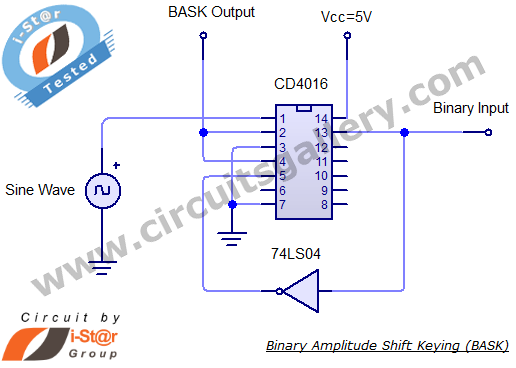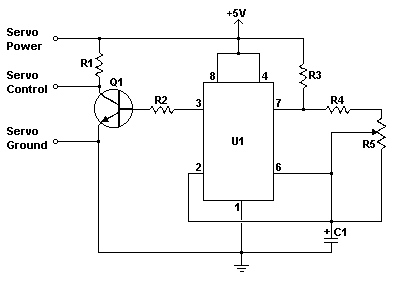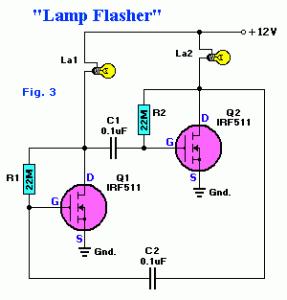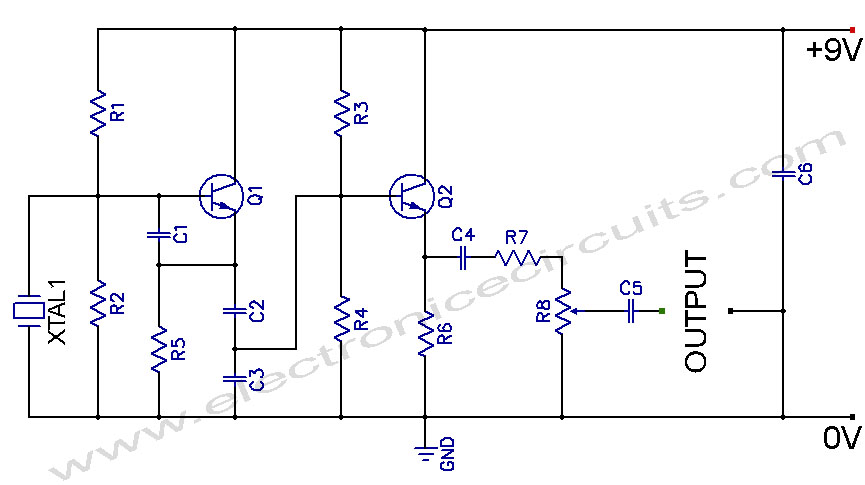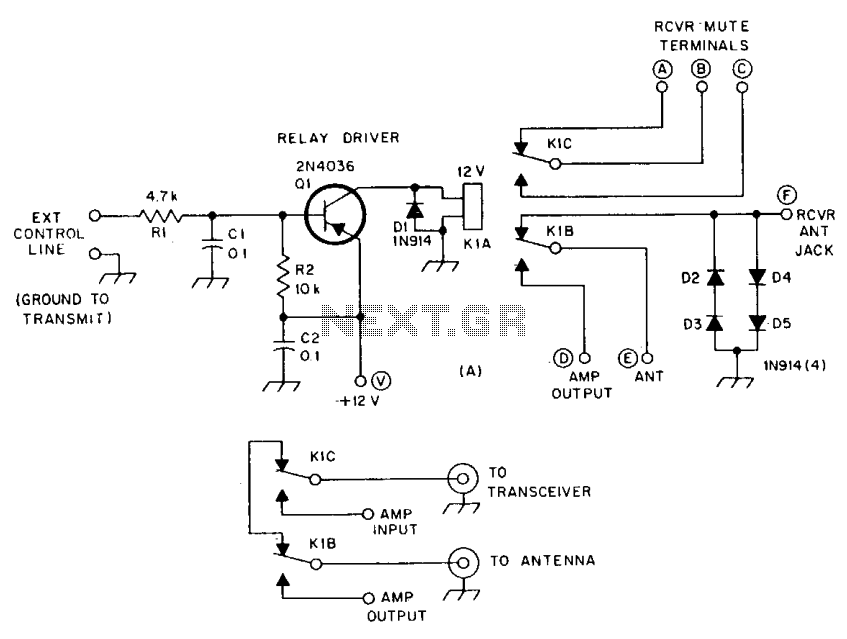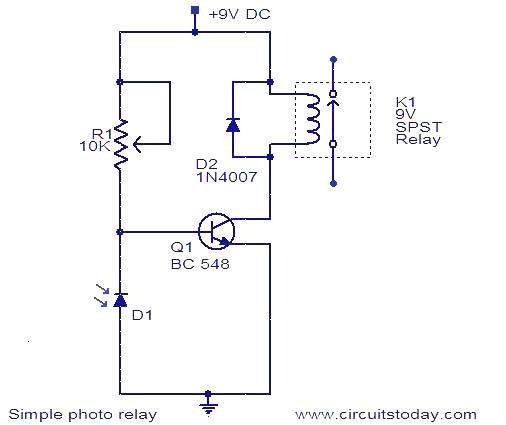
Dynamic mic preamplifier circuit
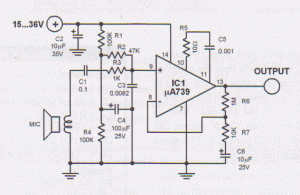
This microphone preamplifier utilizes the low-noise integrated circuit (IC) uA739. The circuit serves as an example of an effective design for preamplifying dynamic microphones. The IC contains two operational amplifiers.
The uA739 is a precision integrated circuit known for its low noise characteristics, making it suitable for audio applications where signal integrity is critical. The design of this microphone preamp typically involves connecting the dynamic microphone to the input of the uA739, where the microphone's low-level audio signal is amplified.
The circuit configuration generally includes a power supply circuit that provides the necessary voltage for the uA739, usually in the range of ±15V. The input stage may consist of a coupling capacitor to block any DC offset from the microphone, allowing only the AC audio signal to pass through.
Feedback resistors are employed to set the gain of the operational amplifier, which can be adjusted based on the desired output level. The output of the uA739 feeds into a coupling capacitor that further isolates the amplified audio signal from the next stage in the audio chain, ensuring that any DC components are removed.
Additionally, bypass capacitors may be included in the power supply lines to filter out any high-frequency noise that could affect the performance of the preamp. The overall design prioritizes low distortion and high fidelity, making it an ideal choice for recording and live sound applications.
In summary, the use of the uA739 in this microphone preamplifier circuit exemplifies a robust solution for enhancing the performance of dynamic microphones, ensuring clear and high-quality audio reproduction.This mic preamp uses the low noise IC uA739. The circuit is an example of how a good preamplifier can be designed for dynamic microphones. The IC houses tw. 🔗 External reference
The uA739 is a precision integrated circuit known for its low noise characteristics, making it suitable for audio applications where signal integrity is critical. The design of this microphone preamp typically involves connecting the dynamic microphone to the input of the uA739, where the microphone's low-level audio signal is amplified.
The circuit configuration generally includes a power supply circuit that provides the necessary voltage for the uA739, usually in the range of ±15V. The input stage may consist of a coupling capacitor to block any DC offset from the microphone, allowing only the AC audio signal to pass through.
Feedback resistors are employed to set the gain of the operational amplifier, which can be adjusted based on the desired output level. The output of the uA739 feeds into a coupling capacitor that further isolates the amplified audio signal from the next stage in the audio chain, ensuring that any DC components are removed.
Additionally, bypass capacitors may be included in the power supply lines to filter out any high-frequency noise that could affect the performance of the preamp. The overall design prioritizes low distortion and high fidelity, making it an ideal choice for recording and live sound applications.
In summary, the use of the uA739 in this microphone preamplifier circuit exemplifies a robust solution for enhancing the performance of dynamic microphones, ensuring clear and high-quality audio reproduction.This mic preamp uses the low noise IC uA739. The circuit is an example of how a good preamplifier can be designed for dynamic microphones. The IC houses tw. 🔗 External reference
